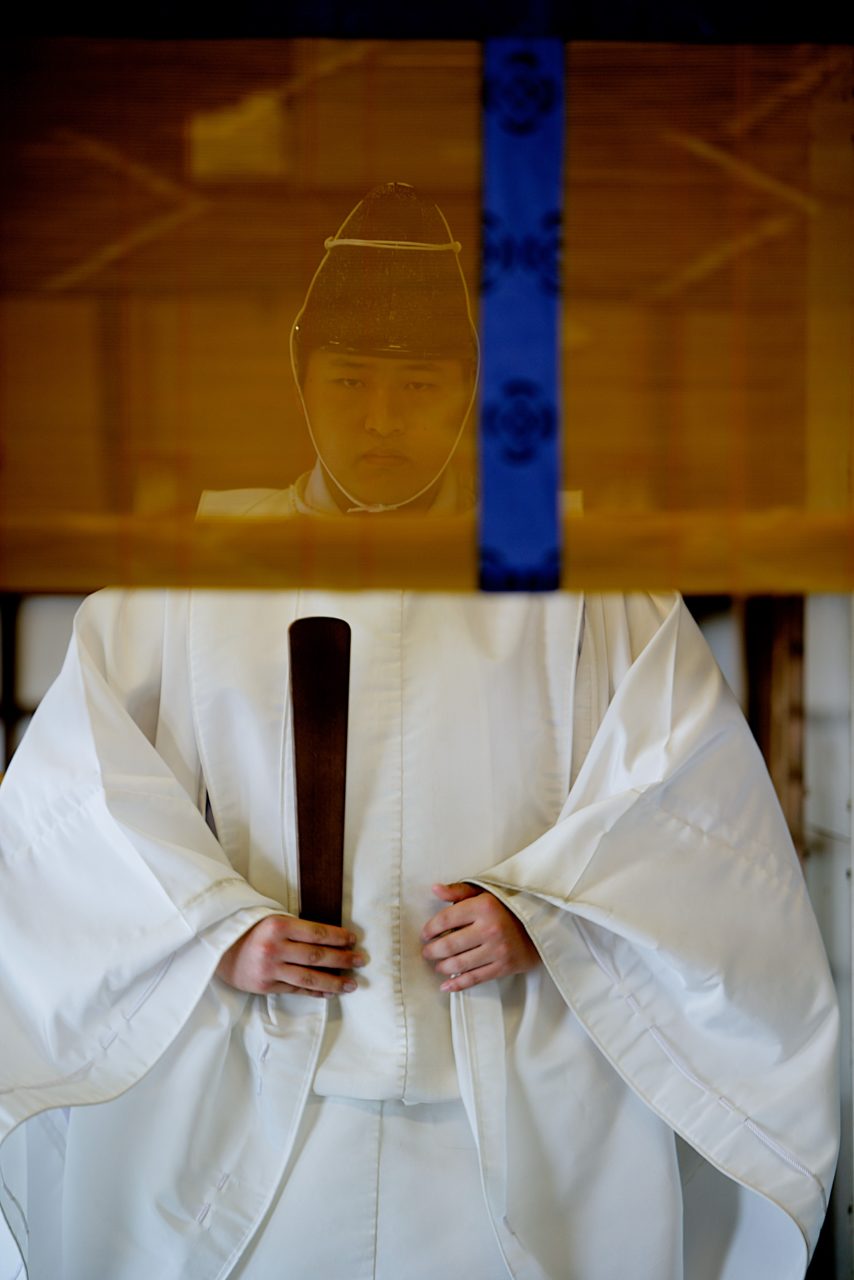Cannabis Japonica: Shinto & the Spirit of 麻
This exhibition reveals how closely hemp is interwoven with traditional Japanese culture.
Amsterdam

Amsterdam

© Floris Leeuwenberg
What does the Japanese kanji (sign) 麻 mean? Its ambiguity actually reflects the versatility and long history of fibre hemp in Japanese culture. 麻 may refer to the cannabis plant itself. For thousands of years, hemp has been used in Japan as a raw material for textiles, food and medicine. However, it may also refer to ritual objects made with hemp fibres used by Shinto priests. Shinto is seen as the spiritual heart of Japan, closely linked to the country’s national identity and history.
The exhibition Cannabis Japonica: Shinto & the Spirit of 麻 , created in collaboration with guest curator Yuko Ogino, shows how hemp holds a special spiritual position in Japan to this day.
A wide range of Japanese ritual traditions and ceremonies are at the heart of Shinto. They often revolve around spiritual purification. This allows people to get in touch with the kami – vital forces of nature – and the great whole of which humans are a part. 麻 is an essential part of this spiritual practice, as a purifying function is attributed to hemp and the items made from its golden fibres. It is paradoxical that in a country where cannabis is socially taboo and highly illegal, this plant also has an undeniable spiritual function.
The central piece is a Japanese house shrine (kamidana), received from Japan’s most prestigious Shinto shrine, Ise Jingu. Thus, the museum provides a temporary home for several kami, who are present through amulets (kamifuda) from three more shrines. During a private ceremony at the start of the exhibition the first non-Japanese Shinto master, Paul de Leeuw, will invite the kami to take up residence. There they will be provided with regular offerings throughout the exhibition. The museum thus honours Japanese Shinto customs, respectfully celebrating them without appropriation.
A number of hemp objects traditionally found in Japanese Shinto shrines have been made especially for this exhibition by Yamakawa, an artisanal workshop in Kyoto. The exhibition entrance is marked by a shimenawa, a thick braided rope traditionally made from hemp fibres, delineating a sacred place designated for the kami. A special bell-rope made of hemp fibres (a suzuo) hangs near the shrine in the exhibition room. The bell is used to purify visitors and awaken the kami. These artefacts provide a unique experience in the heart of Amsterdam for people who might never visit a Shinto shrine in Japan.
The exhibition Cannabis Japonica: Shinto & the Spirit of 麻 was created in collaboration with guest curator Yuko Ogino, founder and director of the NPO Society for Rebalance Kyoto and chair of Project Japan, an organization that aims to give traditional Japanese culture a place in modern life. Paul de Leeuw is Guji of Yamakage Shinto Holland Saigu in Amsterdam. Thanks to this special collaboration, the museum broadens the perspective on its collection and on global cannabis history, and realises a long-held dream of museum director Ben Dronkers to devote attention to this fascinating subject.
Sign up to get the latest news about the museum, upcoming exhibitions and events.
Oudezijds Achterburgwal 148
+31 (0)20-6248926
amsterdam@hashmuseum.com
Monday to Thursday: 12:00 – 20:00
Friday to Sunday: 10:00 - 22:00
More information
Carrer Ample 35
+34 93 319 75 39
barcelona@hashmuseum.com
Every day: 11:00 – 20:00
More information
© 1987 - 2025 Hash Marihuana & Hemp Museum. All Rights Reserved. CSS Status 404